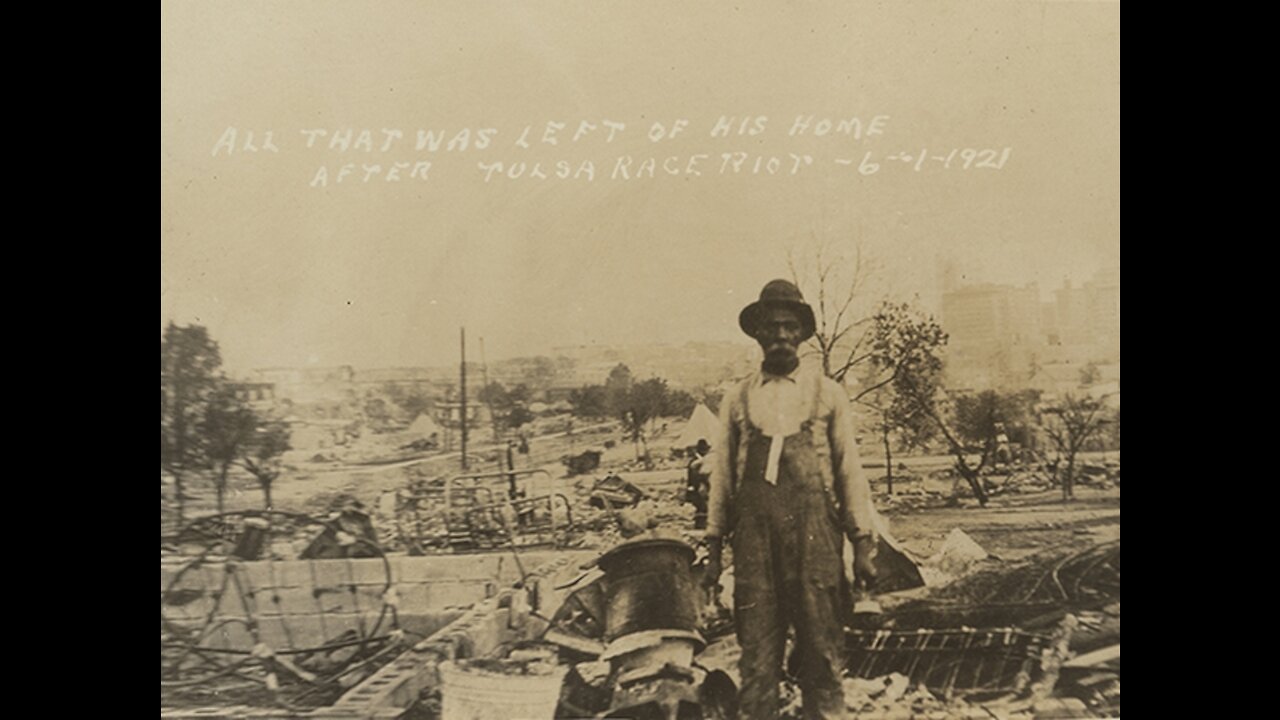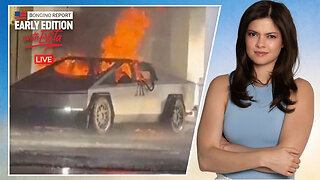Premium Only Content

Tulsa Race Massacre 1921
On May 31, 1921, a white mob turned Greenwood upside down in one of the worst racial massacres in U.S. history. In the matter of hours, 35 square blocks of the vibrant Black community were turned into smoldering ashes. Countless Black people were killed — estimates ranged from 55 to more than 300 — and 1,000 homes and businesses were looted and set on fire.
Yet for the longest time, the massacre received scant mentions in newspapers, textbooks and civil and governmental conversations. It wasn’t until 2000 that the slaughter was included in the Oklahoma public schools’ curriculum, and it did not enter American history textbooks until recent years. The 1921 Tulsa Race Riot Commission was formed to investigate in 1997 and officially released a report in 2001.
“The massacre was actively covered up in the white community in Tulsa for nearly a half century,” said Scott Ellsworth, a professor of Afro American and African studies at the University of Michigan and author of “The Ground Breaking” about the Tulsa massacre.
“When I started my research in the 1970s, I discovered that official National Guard reports and other documents were all missing,” Ellsworth said. “Tulsa’s two daily white newspapers, they went out of their way for decades not to mention the massacre. Researchers who would try to do work on this as late as the early 1970s had their lives threatened and had their career threatened.”
The Tulsa museum was founded in the late 1990s, but visitors couldn’t find a trace of the race massacre until 2012 when Place became executive director, determined to tell all of Tulsa’s stories. A digital collection of the photographs was eventually made available for viewing online.
“There’s still a significant number of people in our community who don’t want to look at it, who don’t want to talk about it,” Place said.
‘The silence is layered’
Not only did Tulsa city officials cover up the bloodbath, but they also deliberately shifted the narrative of the massacre by calling it a “riot” and blaming the Black community for what went down, according to Alicia Odewale, an archaeologist at University of Tulsa.
The massacre also wasn’t discussed publicly in the African American community either for a long time. First out of fear — if it happened once, it can happen again.
“You are seeing the perpetrators walking freely on the streets,” Odewale said. “You are in the Jim Crow South, and there are racial terrors happening across the country at this time. They are protecting themselves for a reason.”
Moreover, this became such a traumatic event for survivors, and much like Holocaust survivors and World War II veterans, many of them didn’t want to burden their children and grandchildren with these horrible memories.
Ellsworth said he knows of descendants of massacre survivors who didn’t find out about it until they were in their 40s and 50s.
“The silence is layered just as the trauma is layered,” Odewale said. “The historical trauma is real and that trauma lingers especially because there’s no justice, no accountability and no reparation or monetary compensation.”
-
 1:31:18
1:31:18
Graham Allen
3 hours agoPROTECT TRUMP AT ALL COST!!! They Are Trying To End It Before It Begins!!!
37.8K63 -
 LIVE
LIVE
LFA TV
19 hours agoJ6 CERTIFICATION DAY! | LIVE FROM AMERICA 1.6.25
2,871 watching -
 LIVE
LIVE
Caleb Hammer
44 minutes agoShe Hates Her Husband, But Can’t Escape | Financial Audit
107 watching -
 LIVE
LIVE
Matt Kohrs
14 hours agoThe Market Rally Continues! (Bitcoin, Nvidia & Tesla) || The MK Show
1,352 watching -
 39:01
39:01
BonginoReport
5 hours agoWe're Surrounded by Psyops (Ep.112) - 01/06/2025
68.7K98 -
 1:12:10
1:12:10
Game On!
11 hours ago $3.24 earnedNFL Playoffs are SET! And our Experts know who will win the SUPER BOWL!
21.2K3 -
 LIVE
LIVE
Jeff Ahern
2 hours ago $0.59 earnedMonday Madness with Jeff Ahern (Castro's baby steps down)
356 watching -
 8:16
8:16
Rethinking the Dollar
20 hours agoWhy Investors Are Optimistic About Silver in 2025
58.9K17 -
 13:06
13:06
Fit'n Fire
21 hours ago $7.15 earnedSuppressing a PDW -- The Beretta PMXs and Rugged Obsidian 9
75.1K7 -
 1:31:16
1:31:16
TheDozenPodcast
22 hours agoSwinging, cheating and adult parties: Jem & Daz 🍍
47.8K13